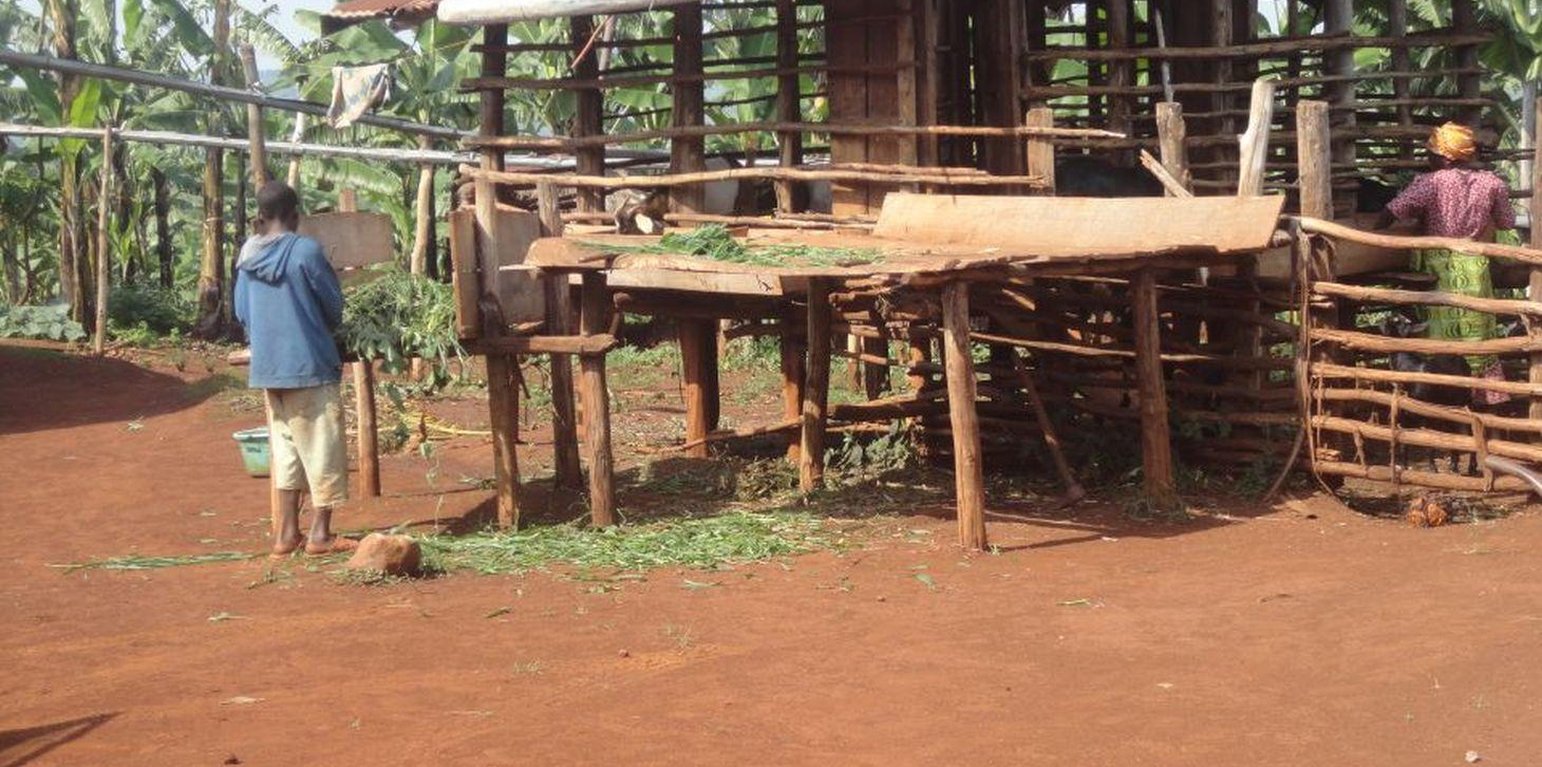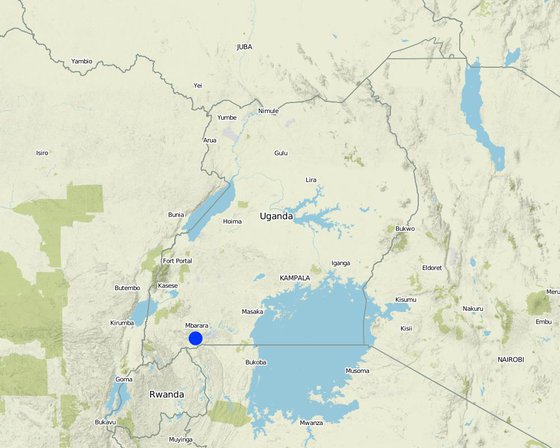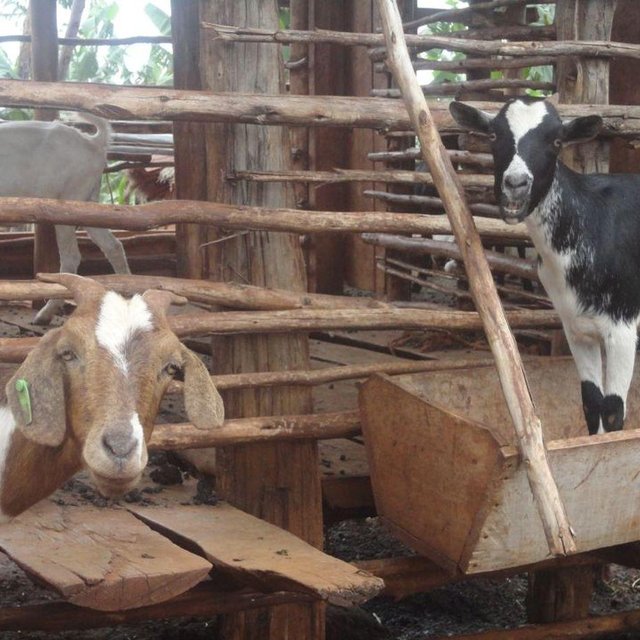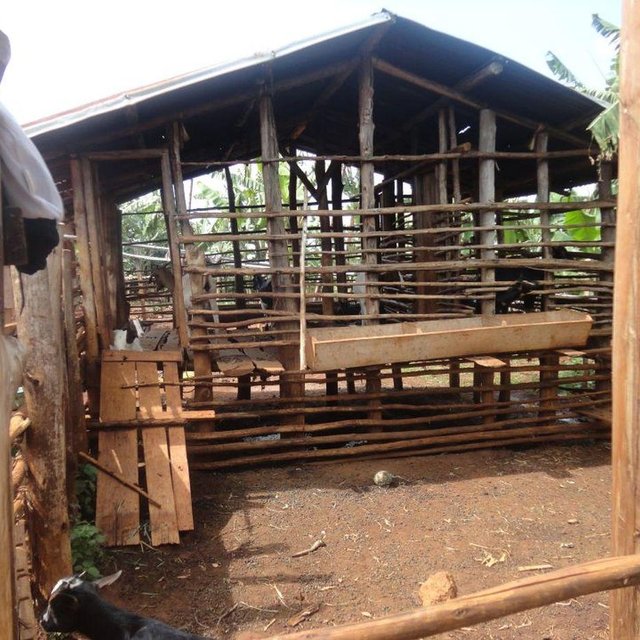



Zero-grazing has been a common livestock (cattle and pigs) management practice in most areas of south-western Uganda due to reduced communal grazing land. In the predominantly annual cropping system communities, free grazing livestock often damage crops and are a major cause of conflict. On the other hand, farmers observe that crop yields have declined season after season. For example, the bunch of bananas has grown smaller, it has smaller fingers, and many banana stands have no fruit during much of the year. The most important ways through which croplands in Rubagano are degraded include nutrient transfer through harvest and crop residue movement and use; nutrient mining whereby continuous cultivation is done with little or no replenishment; and soil and water runoff on steep slopes. Farmers know that one of the most important ways to reverse declining soil fertility is to apply manure, but it is expensive. Therefore farmers acquired goats or pigs primarily for the provision of manure for their cropland, but also as a household income generating enterprise. In stall-fed goat or pig production, The zero-grazing unit is designed in such a way that it is well ventilated and protected from wind, rain and constant direct sunshine to avoid livestock developing coughs, colds and stress. The unit has 3 major parts: the feeding and rest area, the exercise area and the manure collection area. The feeding/rest area is raised 1 m above the ground. Below it is the manure collection area and above it, a corrugated iron roof. There is a feeding vat on each side of the feeding/rest area in which mixed fodder is fed to the livestock. A wooden food preparation slab for cutting and mixing fodder is in front of the feeding/rest area. The unit for housing 12 goats is 4 m by 8 m on the ground and 3 m high at the feeding area.
Purpose of the Technology: The major objective of stall-feeding is to maximize manure collection for sustaining soil fertility in cropland. Other goals are to improve household income, reduce expenditure on pests and disease management through livestock isolation from other animals and to reduce labor by cutting and storing fodder for use over a period instead of grazing in distant pastures daily.
Establishment / maintenance activities and inputs: The materials required for establishment of the zero-grazing unit for goats are wooden posts or poles, cut-off planks, wooden slats/timber, iron sheets and nails. The 4 m by 4 m feeding/rest area is raised 1 m above the ground on strong Eucalyptus or pine posts of diameter 5-10 cm. Its wall is 2 m high and is made of widely spaced cut-off planks or light wooden poles not more than 3 cm diameter nailed to strong upright posts. The floor is made of wooden slats placed 2 cm apart, big enough to allow livestock droppings to fall through but too small for adult goats’ or kids’ hooves pass, in order to avoid injury to livestock. There is a 1.5 m by 0.5 m feeding vat on each side of the feeding/rest area and a 1 m by 1 m fodder mixing wooden slab at the front. On the ground to one side of the feeding/rest area is the 4m by 4m exercise area. The unit can be constructed at any time of the year.
Natural / human environment: Regular maintenance of the unit is done to ensure the floor does not develop holes that can lead to injury of the livestock, and the roof does not leak when it rains. Increased manure collection and application increases crop yields and supports crop diversification.

Location: Mbarara District, Uganda, Uganda
No. of Technology sites analysed:
Spread of the Technology:
In a permanently protected area?:
Date of implementation: less than 10 years ago (recently)
Type of introduction








| Specify input | Unit | Quantity | Costs per Unit (UGX) | Total costs per input (UGX) | % of costs borne by land users |
| Labour | |||||
| Construction of zero grazing shed ( including vats and manura collecion area) | ha | 1.0 | 115.4 | 115.4 | 100.0 |
| Equipment | |||||
| Tools | Set | 1.0 | 115.4 | 115.4 | 100.0 |
| Construction material | |||||
| Tree poles,nails,sorghum stalk | ha | 1.0 | 38.46 | 38.46 | 100.0 |
| Corrugated iron sheets | ha | 1.0 | 250.0 | 250.0 | 100.0 |
| Other | |||||
| Livestock (3 Does) | ha | 1.0 | 173.1 | 173.1 | 100.0 |
| Total costs for establishment of the Technology | 692.36 | ||||
| Total costs for establishment of the Technology in USD | 0.27 | ||||
| Specify input | Unit | Quantity | Costs per Unit (UGX) | Total costs per input (UGX) | % of costs borne by land users |
| Labour | |||||
| Labour | ha | 1.0 | 38.46 | 38.46 | |
| Equipment | |||||
| Tools | ha | 1.0 | 11.54 | 11.54 | 100.0 |
| Construction material | |||||
| Tree poles,nails,sorghum stalk | ha | 1.0 | 3.85 | 3.85 | 100.0 |
| Corrugated iron sheets | ha | 1.0 | |||
| Other | |||||
| Livestock (3 Does) | ha | 1.0 | 18.0 | 18.0 | 100.0 |
| Total costs for maintenance of the Technology | 71.85 | ||||
| Total costs for maintenance of the Technology in USD | 0.03 | ||||
Quantity before SLM: 10kg
Quantity after SLM: 60kg
increased yields for beans realised.
Quantity before SLM: 23dollars per yr
Quantity after SLM: 92 dollars per yr.
yields increased from sell of goats
As there is now a lot more activity on-farm
Vegetation cover has been improved.
Food security and household income have improved. This has resulted in children in these households having more time for school and in case of illness, there in some money for accessing treatment.
livestock is confined